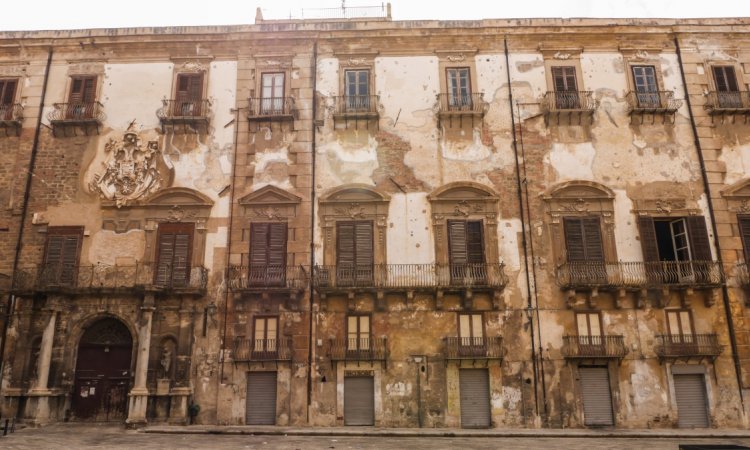
There’s no shortage of things to do in Sicily, as it’s been a hub of culture and trading for at least two thousand years. Its beauty, warm climate and strategic location in the Mediterranean have seen it settled by early tribes like the Sicani, then waves of Phoenician, Greek, Roman, Byzantine, Arab, and Norman populations, until the unification of Italy in the 1800s.
With so many cultures intermingling over the centuries, it’s no surprise that Sicily is home to a multi-faceted mosaic of architectural styles. The numerous royal palaces in Sicily are perhaps the most striking examples of this, as one can find elements of baroque, rococo, and neoclassical styles on the same floor, or even in a single room.
Any traveler wondering what to do in Sicily should consider a visit to any or all of these seven marvellous palaces.
Palazzo Alliata of Pietratagliata
There are five centuries worth of decorative styling in this magnificent palace, but it stands out as a shining example of the Sicilian rococo style. Built in 1473, it is now owned by the 26th-generation descendants of the family, Prince Biagio Licata Baucina and his wife Princess Signoretta Alliata di Pietratagliata. Notable features include its castellated tower and its grand ballroom, which features the largest chandelier in Europe.
Palazzo Alliata di Villafranca
The size of an entire city block, this palazzo is home to one of Palermo’s most important art collections. Its gilded plaster works, silk damask wall coverings, and ormolu consoles attest to the power of the Sicilian nobles of the 17th and 18th Centuries.
Palazzo Asmundo
Situated on Palermo’s oldest and most exclusive street, Cassaro Road (known as Vittorio Emanuele II since Italian unification), Palazzo Asmundo is a prime example of Palermo’s Baroque period. Visit this sumptuous palazza to take in frescoes, collections of fine porcelain, 19th Century carriages and coins going back more than two thousand years. If you’re hunting for unique things to do in Palermo, note that tour groups can enjoy breakfast, lunch and aperitivos served in the palace bistro.
Palazzo Mirto
Members of the Filangeri clan lived in the Palazzo Mirto for 400 years, until they donated it to the state in 1982. Since it was a family home for so long, the second floor living quarters are quite intimate and subdued compared to the stately reception rooms, which served as an opulent demonstration of the clan’s wealth and power through the centuries. Gaze upon marble floors, frescoed and domed ceilings, Murano chandeliers, French antiques, Chinese screens and much more.
Palazzo Valguarnera-Gangi
Unquestionably Sicily’s most famous palace, the
Palazzo Valguarnera-Gangi is one of the most sought-after places to visit in Sicily. The Palazzo is renowned for its ornately gilded “Galleria degli Specchi”, where director Luchino Visconti set the famous ballroom scene from his film “Il Gattopardo” (The Leopard). The jaw-dropping beauty of this magnificent hall recalls the iconic Hall of Mirrors at Versailles.
Villa Testasecca
Named after its former owner, Count Ignazio Testasecca, this villa/palazzo offers a glimpse into the relaxed country home of a Sicilian nobleman. A far cry from the glitz and glamour of downtown Palermo, Villa Testasecca’s spacious yet cozy living quarters suggest a quiet family life behind the white columns and magnificent red walls seen from the outside.
Palazzo Ajutamicristo
For more than 600 years, the Palazzo Ajutamicristo has played host to prominent royals such as Queen Giovanna of Naples and Emperor Charles V. The current owners and residents are the Calefati family. Tourists can also enjoy a palatial experience, as the palazzo has two double rooms for rent, each with private bathroom and breakfast.
Step inside Sicily’s rich and storied past
Once only accessible to nobles and royals, today Sicily’s lavish royal palazzos are now open to anyone who wishes to explore these lush repositories of Sicilian art, culture and history.


